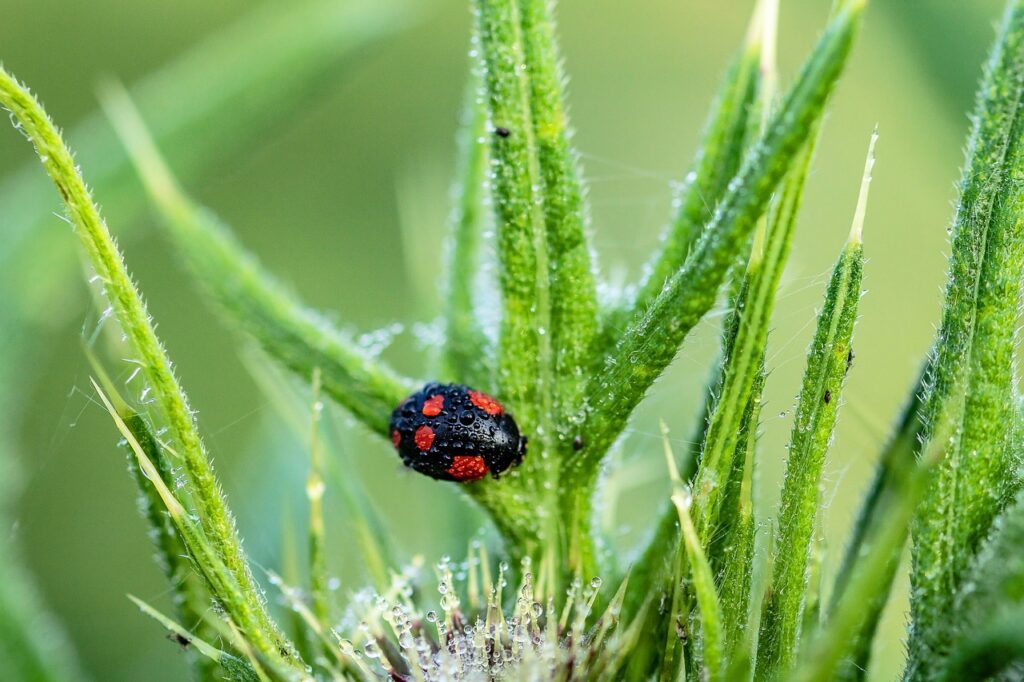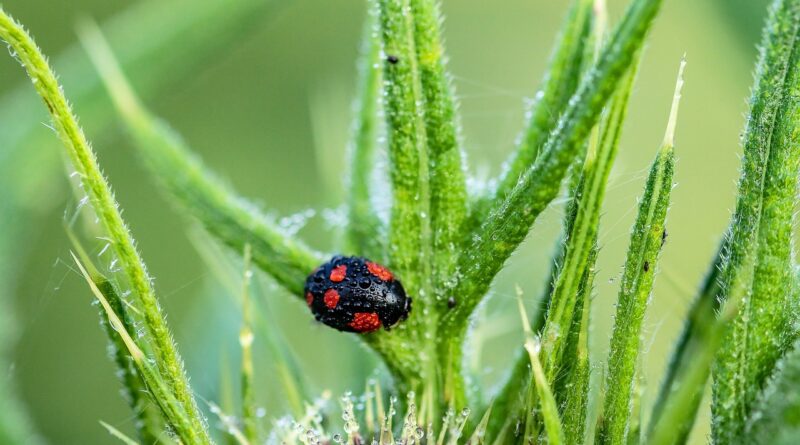Companion Planting For Natural Pest Control
Are you tired of using chemical pesticides to control pests in your garden? Have you considered companion planting as a natural alternative?
Companion planting is the practice of growing different species of plants together for their mutual benefit. Not only does it promote plant growth and soil health, but it can also help control pests without the use of harmful chemicals.
Companion planting has been used for centuries by farmers and gardeners alike. It involves planting certain plants next to each other to help them thrive and ward off pests. The concept is simple: some plants have natural properties that can repel certain pests, while others can attract beneficial insects that will help control pest populations.
In this article, you will learn about the benefits of companion planting for natural pest control and how to choose the right companion plants for your garden.
Understanding Companion Planting and Its Benefits
You might be surprised to learn that by planting certain herbs and flowers alongside your vegetables, you can naturally repel pests and improve the overall health of your garden. This technique is called companion planting, and it’s been used for centuries by gardeners around the world.
Companion planting techniques involve pairing plants that work well together, either because they complement each other’s growth patterns or because they have natural pest-repelling properties. Some popular companion plant combinations include planting marigolds alongside tomatoes, which can repel nematodes and other harmful insects, and planting basil alongside lettuce, which can help prevent aphids and other pests from attacking the delicate leaves.
Other examples of companion planting include planting onions alongside carrots to repel carrot flies and planting garlic alongside roses to repel aphids and other pests. By using companion planting techniques, you can create a healthy and vibrant garden that is free from harmful pests and disease.
So, why not give it a try and see the difference it can make in your own garden?
Choosing the Right Companion Plants for Natural Pest Control
When looking to enhance your garden’s biodiversity and promote healthy growth, it’s important to consider which plants work best together to deter unwanted insects and pests. Plant combinations are key to successful companion planting for natural pest control.
For example, planting basil near tomatoes can help keep pests like aphids and hornworms away, while also improving the flavor of the tomatoes. Similarly, planting marigolds around your garden can help deter various pests, including nematodes, whiteflies, and aphids.
Another important factor to consider when choosing companion plants for natural pest control is the use of pest resistant varieties. These plants are specifically bred or selected to resist certain pests and diseases, making them a great addition to any companion planting scheme.
For example, planting pest resistant varieties of broccoli and cabbage can help deter cabbage worms and other pest insects, while also improving the health and yield of your crops. By carefully selecting and combining different plant varieties, you can create a diverse and pest-resistant garden that promotes healthy growth and natural pest control.
Repelling Pests with Companion Planting
Get ready to say goodbye to pesky insects and pests in your garden by using the power of plant partnerships. Companion planting combinations can be used to repel unwanted visitors without the use of harmful chemicals. By choosing the right combinations, you can create a natural barrier that will keep your plants healthy and thriving.
One way to repel pests is by making your own DIY pest repellent. Mix together chopped garlic, hot chili peppers, and water in a blender. Strain the mixture and add it to a spray bottle. Spray the mixture onto your plants and the surrounding soil. This will repel insects and help prevent disease.
Another option is to plant marigolds, which are known to repel pests like aphids and whiteflies. By planting marigolds alongside your other plants, you can protect them from these harmful pests.
Attracting Beneficial Insects with Companion Planting
Attracting beneficial insects to your garden is easy with the right plant combinations. Plant selection and garden design play a significant role in attracting beneficial insects. When designing a garden, it’s essential to consider the insect behavior and ecology. This’ll help you choose the right plants to attract specific beneficial insects that can help control pests in your garden.
One of the ways to attract beneficial insects is by planting a diverse range of plants. A mix of flowering plants and herbs can attract different types of beneficial insects such as ladybugs, lacewings, and hoverflies. These insects prey on pests like aphids, mites, and whiteflies, which can cause damage to your plants.
In addition, planting plants that provide nectar and pollen can also attract bees, butterflies, and other pollinators that can help increase your garden’s yield. By selecting the right plants and designing your garden appropriately, you can create a thriving ecosystem that benefits both your plants and the beneficial insects that help protect them.
Maintaining Soil Health with Companion Planting
Maintaining healthy soil is essential for a successful garden, and using companion plants can help enrich the soil with nutrients and improve overall plant growth. Companion planting involves growing different plants together that complement each other’s needs.

For example, legumes such as beans and peas are known for their ability to fix nitrogen in the soil. When these plants are grown alongside other crops, they help increase soil fertility by adding nitrogen to the soil. This, in turn, improves crop yield and overall plant health.
Another way to maintain soil health with companion planting is by using plants that have deep roots. Plants like comfrey and dandelion have roots that can reach deep into the soil, extracting nutrients and minerals that other plants can’t reach. When these plants are chopped and left on the soil surface, their deep roots bring these nutrients to the topsoil, enriching the soil with organic matter.
This helps retain moisture, promotes healthy soil structure, and provides essential nutrients to the plants. By using companion plants to improve soil fertility, you can create a thriving garden that produces healthy, nutrient-rich crops.
Frequently Asked Questions
Can companion planting completely eliminate the need for pesticides?
You can try alternatives to pesticides, but relying solely on companion planting may have drawbacks. It’s unlikely to completely eliminate the need for pesticides, but it can reduce their use and create a more diverse and healthy garden ecosystem.
How do you know which companion plants work best together?
To determine which companion plants work best together, research companion planting combinations. Benefits of companion planting include improved soil quality, increased crop yield, and natural pest control. Experiment to find the best combinations for your garden.
Are there any companion plants that should not be planted together?
When it comes to companion planting, it’s important to know which plants work well together. However, it’s equally important to know which ones don’t. To avoid common mistakes, educate yourself on proper pairings with Companion Planting: How to Pair Plants for Maximum Benefits.
Does companion planting have any impact on the flavor of the harvested produce?
Did you know that companion planting can impact the flavor of your harvested produce? Certain plants, like basil and tomatoes, can enhance each other’s taste. Harvesting techniques also play a role in flavor.
Is companion planting effective for controlling all types of pests, or are there certain pests that it doesn’t work well against?
Common misconceptions about pest control often lead people to believe companion planting is a cure-all. While it can be effective against many pests, it’s not a guarantee. Additionally, there are benefits beyond pest control, such as improving soil health and attracting beneficial insects.
Conclusion
Now that you understand the benefits of companion planting and how to choose the right plants for natural pest control, it’s time to put it into action. By planting certain herbs, flowers, and vegetables together, you can help repel pests and attract beneficial insects to your garden.
Not only will this help keep your plants healthy and thriving, but it will also reduce the need for harmful pesticides.
Remember to also focus on maintaining soil health through companion planting. By rotating crops and planting cover crops, you can improve the quality of your soil and support a healthy ecosystem in your garden.
With a little bit of planning and effort, companion planting can be a great way to promote natural pest control and sustainable gardening practices.

